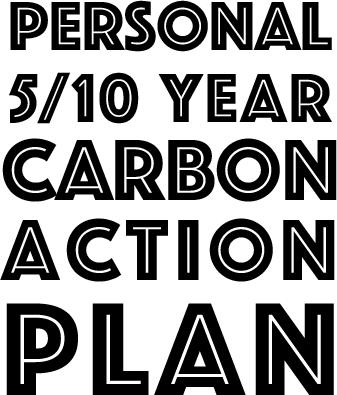A message from our sponsor: Tacoma Public Utilities (TPU) is excited to partner with the…
Personal 5/10 Year Carbon Action Plan Launch

We are excited to announce that this year’s Slam + Summit will be the kickoff for the 5/10 Year Carbon Action Plan Challenge. The concept of the 5/10 action plan is that repeating the scary scenarios of climate change, however true, are not effective at motivating people to change. It is understood that political change is a critical piece of climate action, but personal change will be almost as important, because Americans exercise great power with their consumer decisions. Those of us who are concerned and aware may have to act first
The goal of the challenge is to create a forum where people total up the emissions from our current lifestyle and purchases of gasoline, natural gas, jet fuel, electricity, and consumer goods, and to share mutual support for creating and executing a plan. The 5/10 year period is to coincide with worldwide goals of starting drastic reductions in fossil fuel use by 2030 and to help reach the 1.5 to 2 degree scenarios described by the IPCC. This effort is being led by Tom Balderston and Michael Laurie who will develop a carbon calculator and open a FB group or other forum to launch at the summit.
The idea is to spend the year 2021 figuring out what our own lifestyle carbon footprint is, then researching and building the plan to cut that in half by 2025, and by 90% by 2030. Once we have a plan, we should share it with friends and make a public commitment. Through the decade there will be many ways we can offer each other support to get there.
It’s true that action is urgent, but it actually is all right if you can’t change the whole world by next week. The plan should be to cut your purchase of these products 50% by 2025, and 80-90% by 2030, mixing relatively simple actions like offsets with larger capital improvements like EVs and heat pumps so that we can schedule and afford them. The focus here is to reduce our anxiety and guilt and give us ways to act and feel like part of the solution.
The forum will definitely include discussion of equity issues, including: how to make plans affordable for low income people and renters, financing capital improvements and energy retrofits, choice of offsets and whether tree planting programs, etc benefit poor nations and the responsibility of those with resources to do more.
“The richest 10% of the global population, comprising about 630 million people, were responsible for about 52% of global emissions over the 25-year period, the study showed.”
“Globally, the richest 10% are those with incomes above $35,000 a year, and the richest 1% are people earning more than about $100,000.”


